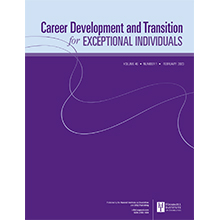본문
A scoping review of technology-based vocational interventions for individuals with autism

By prof. Youngsun Lee,
Special Education
Research Profile
ylee@ewha.ac.kr
Many adults with autism experience employment-related difficulties. Unemployment and underemployment rates among autistic youth and adults remain high, and studies have shown that the employment rates of autistic individuals are the lowest among all individuals with disabilities. Yet, individuals with autism often have remarkable vocational abilities such as reliability and attention to detail that they can leverage when jobs match their needs and skill sets, and, people with autism can have successful employment experience with appropriate support, environmental accommodations, and skills training. Specifically, researchers have suggested teaching vocational skills to help individuals with autism attain and maintain competitive positions. In particular, an increasing number of interventions have been incorporating technology because of its increased practicality and convenience (e.g., the reduced need for direct and consistent support from job coaches and enhanced independence). This recent growth in technology-based vocational intervention literature and constantly changing patterns of technology use suggest the need for a review synthesizing technology-based vocational interventions for individuals with autism to identify areas of consensus and gaps in the current literature and inform future intervention research.
Professor Youngsun Lee’s recent work, entitled "A scoping review of technology-based vocational interventions for individuals with autism" and published in Career Development and Transition for Exceptional Individuals in February 2022 (Volume 45, Issue 1), therefore, provided an overview of the available research evidence surrounding technology-based vocational interventions for autistic individuals. This work was in collaboration with Dr. So Yoon Kim, an assistant professor of Teacher Education at Duksung Women’s University, and Dr. Shannon Crowley, a post-doctoral fellow in TEACCH Autism Program at University of North Carolina at Chapel Hill. They conducted a scoping review to synthesize participant, intervention, and outcome variable characteristics as well as reported the effectiveness of interventions.
A total of 48 studies including 362 participants (mean age = 20.5 years; range = 13–60 years; male = 85.3%) were identified and involved in the synthesis. Approximately 30% of the participants were transition-aged students (i.e., students younger than 22), and most studies were conducted in English-speaking countries. In terms of intervention characteristics, ten studies utilized group designs, and thirty-eight studies utilized single-subject research designs. Interventions used phones and tablets most frequently, followed by video files, virtual reality, radio and headset, computers, and robots. Video modeling (i.e., watching a demonstration of entire tasks before being instructed to emit that behavior) and video prompting (i.e., watching a video clip that illustrates one step of the task before or during being required to emit that behavior) were utilized most frequently. The intervention sites varied across studies, including current worksites, school settings, research settings, or combinations.
Most studies reported that the intervention was effective in improving job-specific (i.e., skills needed for a particular job position), transferable (i.e., skills that can be applied to any type of employment such as social skills and time management), and interview skills (i.e., skills needed to interact and communicate with the interviewer) of autistic individuals. Further, most studies teaching job-specific and transferable skills were single-subject design studies utilizing outcome variables that are context-bound and proximal to the intervention, while all interventions targeting interview skills implemented group designs and measured generalized and distal outcome variables. Context-bound and generalized variables referred to outcome variables measured in a context that was similar to or different from the intervention context in terms of interaction partners, settings, and materials, respectively. Proximal and distal variables referred to outcome measures that were directly taught and were not directly taught, respectively, during the intervention. Given that it is easier to demonstrate improvements when measuring outcomes that are context-bound and proximal, the reported effectiveness of the included studies should be interpreted with caution.
Students with autism still attending middle or high school are frequently taught job-specific skills. As the transition from high school to employment requires careful planning, school-based interventions and transition programs should prepare autistic adolescents for a wide range of postsecondary job options and teach transferable skills to transition-age individuals with autism, rather than helping them learn job-specific skills for positions that they may not actually secure. One example of such transferable skills is digital literacy skills (e.g., skills needed to access digital media including videos that provide instructions for job responsibilities). While the majority of interventions included video-based instruction components, students with disabilities are often insufficiently trained in digital technology, resulting in infrequent and ineffectual use. This suggests that special educators and professionals supporting transition-age youths with autism should consider teaching digital literacy skills to prepare students for the competitive workforce.
Finally, given that the technology-based vocational intervention literature is fast growing, specific guidelines for conducting evidence-based practices for interventions help future researchers implement more robust and effective research. A recent editorial by Bottema-Beutel (2022) problematizes the lowered quality standards in the current autism intervention research and recommends how research quality of interventions can be improved. More interventions that include more generalization phases (in different settings or by inducing interactions with different personnel), examine how these interventions lead to job maintenance or employment opportunities, utilize appropriate procedures to randomize participants, and assess the effectiveness using masked, generalized, and distal instruments are needed to establish the evidence of the efficacy of technology-based vocational interventions.
* Related Article
So Yoon Kim, Shannon Crowley, Youngsun Lee, A Scoping Review of Technology-Based Vocational Interventions for Individuals with Autism, Career Development and Transition for Exceptional Individuals, published online August 2021
